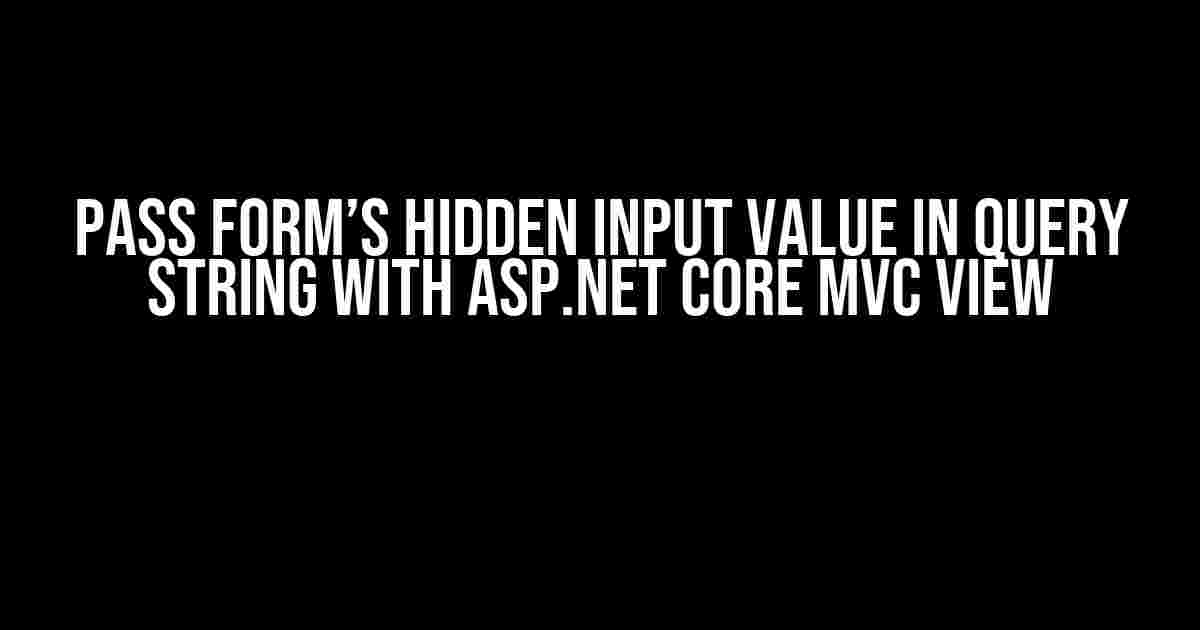Are you tired of scratching your head, trying to figure out how to pass a form’s hidden input value in a query string with ASP.NET Core MVC view? Well, you’re in luck because today, we’re going to dive deep into this topic and explore the simplest and most effective ways to achieve this.
- Why do we need to pass hidden input values in query strings?
- Passing hidden input value using ASP.NET Core MVC view
- Using JavaScript to append hidden input value to the query string
- Using the `IFormCollection` to access hidden input values in the controller action
- Using model binding to access hidden input values in the controller action
- Best practices for passing hidden input values in query strings
- Conclusion
Why do we need to pass hidden input values in query strings?
In many web applications, we need to pass hidden input values from a form to a controller action to perform certain operations or to filter data. For instance, let’s say we have a search form with a hidden input field that contains the search criteria, and we want to pass this value to the controller action to retrieve the filtered data. In such scenarios, passing the hidden input value in the query string is a great way to achieve this.
Passing hidden input value using ASP.NET Core MVC view
Now, let’s get started with the main topic. To pass a hidden input value in a query string with ASP.NET Core MVC view, we’ll use the `

